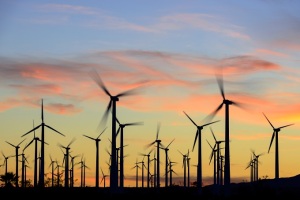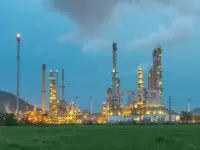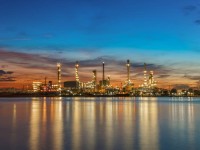
Wind energy engineering is the process of designing wind farms. It refers to all aspects of the design process, including developing site specifications. It also involves planning, manufacturing and testing all hardware and electrical components. Building roads and transporting components to installation sites also falls under wind energy engineering.
A wind energy engineer is a scientist who designs wind farms or their components. Alternatively, he or she may supervise the manufacture of rotor blades or other components. Many different types of engineers play a role in wind energy projects.
What Does a Wind Energy Engineer Do?
Engineers who work on wind farm installations design farm layouts and create schematics. They also do analyses to optimize the designs and layouts of supportive infrastructure, such as roads and transmission lines. These engineers also make recommendations to upgrade and streamline operations.
Wind energy engineers who focus on hardware design turbines, rotor blades, electrical systems, and energy production systems. They analyze the aerodynamic properties of new designs, run tests, and document test results. Some oversee the manufacturing and testing of components. They also estimate budget and scheduling requirements for manufacturing processes.
Because there are many different factors involved in designing such complex systems, several different types of engineers find work in wind energy design. These include aerospace, civil, mechanical, electrical, and environmental engineers, among others.
Types of Engineers Who Contribute to Wind Engineering
Aerospace engineers are the aerodynamics experts. They focus on creating turbine blades and rotors, and assessing their aerodynamic properties. They also help select suitable locations for wind farms and optimize turbine configurations at those sites.
Civil engineers design support structures for turbines, as well as related infrastructure such as buildings and roads. They must design roads that can handle the size and weight of turbine components.
Electrical engineers create and test the electrical components of turbines involved in creating electricity. These include motors, generators, communications systems, and electricity transmission systems.
Electronics engineers work on systems that use electricity to operate the turbine.
Environmental engineers assess and minimize the potential environmental impacts of wind farms.
Industrial engineers plan and supervise the manufacture of wind turbine components.
Materials engineers research, create, and test materials used to make wind turbines, and ensure that they meet technical specifications.
Mechanical engineers design, develop, and test the machines involved in operating turbines and wind farms. They also work on the machinery and manufacturing processes used to make them.
These scientists work together to construct efficient wind farms that make clean, renewable energy a reality.
Where Does a Wind Energy Engineer Work?
These engineers work in offices, laboratories, and industrial plants. Work environment depends largely on the area of specialty. For example, materials engineers may spend more time in laboratories, while mechanical engineers who deal with manufacturing may spend much of their time in factories. Some split their time between a home office and installation sites. Frequent travel is common. This may include international travel, since many major turbine manufacturers are located in other countries. Many wind farms are located in the Midwest, Southwest, and Northeast regions of the United States.
What is the Average Wind Energy Engineer Salary?
Wind energy engineers, who fall under the broader BLS category of environmental engineers, earned a median salary of $92,120 as of May 2020. The lowest 10% in the field earned about $55,450, while the top 10% earned more than $144,670 during this time.*
What is the Job Demand for Wind Energy Engineers?
The job demand for wind energy engineers and other environmental engineers is projected to increase by about 4% between 2020 and 2030.*
How Can I Get a Wind Energy Engineering Degree?
Most positions require a bachelor's degree in energy engineering, mechanical engineering, or another relevant field of engineering from an ABET-accredited program. However, many jobs require graduate degrees, and some require doctorates. Some academic programs offer concentrations in environmental engineering.
Experience is critical for any engineering position. Participating in an internship or cooperative program as an undergraduate is highly recommended. In addition, engineers may need to work in their field for 3-5 years before finding employment with wind turbine manufacturers. Once on they job, they must often participate in substantial on-the-job training.
Other Degrees Related to Wind Energy Engineering
Licensure
Engineers who offer their services directly to the public must be licensed as professional engineers (PEs). While not required for engineers employed by wind turbine manufacturers, some of these manufacturers only hire PEs. Certification is also an excellent way to advance in the field. Licensure generally requires:
- A degree from an ABET-accredited engineering program
- A passing score on the Fundamentals of Engineering (FE) exam
- Relevant work experience, typically at least 4 years
- A passing score on the Professional Engineering (PE) exam
College graduates may take the Fundamentals of Engineering (FE) exam immediately. Engineers who pass this exam are called engineers in training (EITs) or engineer interns (EIs). After gaining four years of work experience, EITs and EIs can go on to take the Principles and Practice of Engineering exam to qualify for licensure.
Several states require engineers to participate in professional development activities in order to keep their licenses. Most states recognize licensure from other states, as long as that state's requirements meet or exceed their own licensure requirements.
After licensing, environmental engineers can earn board certification from the American Academy of Environmental Engineers and Scientists. This certification demonstrates expertise in an area of specialization.
The Association of Energy Engineers offers a Certified Renewable Energy Professional credential that demonstrates expertise in the specification, application, and assessment of renewable energy technologies and products. The credential is recognized by federal agencies, utilities, and other companies. Certification involves passing an exam and paying an examination fee. Flexible education requirements accommodate a variety of related backgrounds, such as business.
What Kind of Societies and Professional Organizations Do Wind Energy Engineers Have?
- The Association of Energy Engineers is a global organization offering news, publications, and information on the field. It administers a Certified Renewable Energy Professional credential. Its job board is also an excellent place to find employment in renewable energy engineering.
- The American Academy of Environmental Engineers and Scientists (AAEES) administers board certification for environmental engineers and accredits academic environmental engineering and environmental science programs. It also provides training through online courses and webinars, and publishes a quarterly magazine and other reference materials for members.
- The National Society of Professional Engineers is the authority on licensure, ethics, and practice in the engineering profession. It hosts a job board, provides salary information, offers a mentoring program, and provides resume writing services. It also organizes six interest groups for construction, government, higher education, industry, private practice, and young engineers.
*2020 US Bureau of Labor Statistics salary figures and job growth projections for environmental engineers reflect national data not school-specific information. Conditions in your area may vary. Data accessed September 2021.





